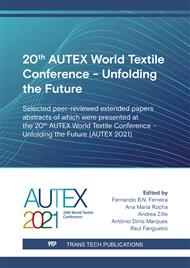p.111
p.121
p.133
p.139
p.147
p.157
p.163
p.173
p.181
Low Twist Hybrid Yarns from Long Recycled Carbon Fibres for High Performance Thermoplastic Composites
Abstract:
With the increasing demand and use of carbon fibre reinforced composites (CFRP), the disposal of carbon fibres (CF) and end-of-life composite parts is gaining tremendous importance, particularly in terms of sustainability. The current focus of using recycled carbon fibre (rCF) is still on nonwovens or injection-moulded components, characterized by low performance. On the contrary, spinning rCF to yarn constructions offers good potential for improved CFRP material properties due to longer fiber length, high fibre orientation, compaction of rCF and even yarn structure. However, previous experiences reveal that the shortening of fibres increases with longer input rCF during carding. Therefore, the focus of this work is placed on broadening the knowledge concerning gentle processing of rCF, especially for fibres > 60 mm in combination with thermoplastic fibres. In this work, a new yarn construction is developed by significantly reducing the yarn twist to ensure a fibre orientation parallel to the yarn axis in order to increase mechanical properties of composites significantly. With the developed hybrid yarns, tensile strength and E-modulus of 1364 ± 49 MPa and 100 ± 15 GPa, respectively in composites could be achieved.
Info:
Periodical:
Pages:
147-153
Citation:
Online since:
June 2022
Price:
Сopyright:
© 2022 Trans Tech Publications Ltd. All Rights Reserved
Share:
Citation:



